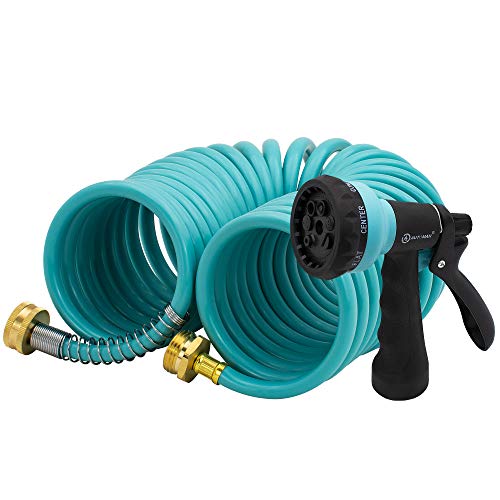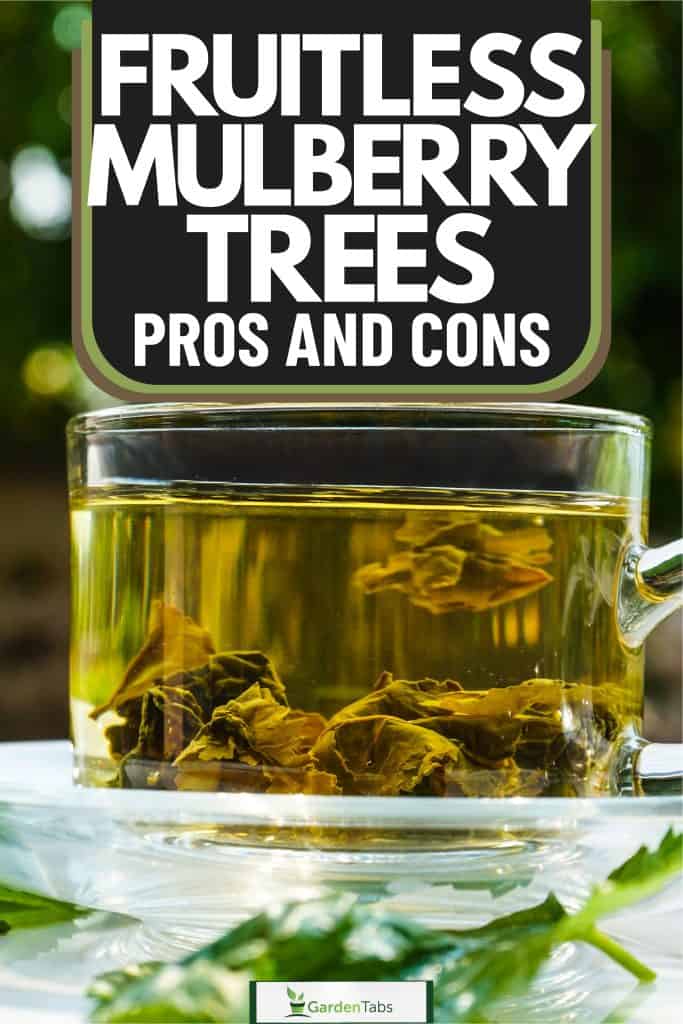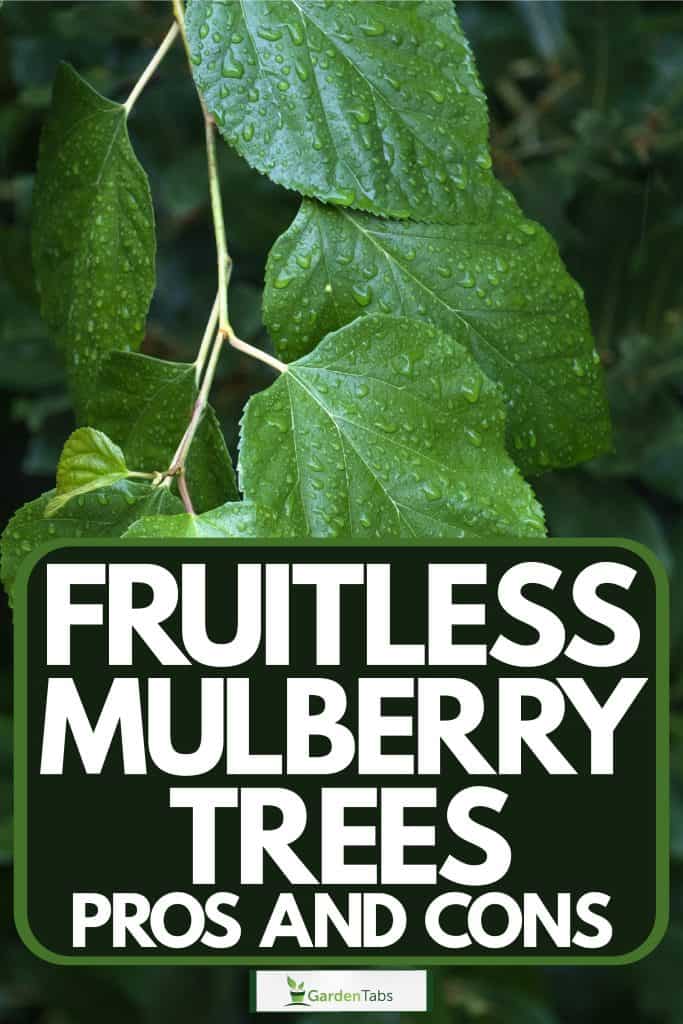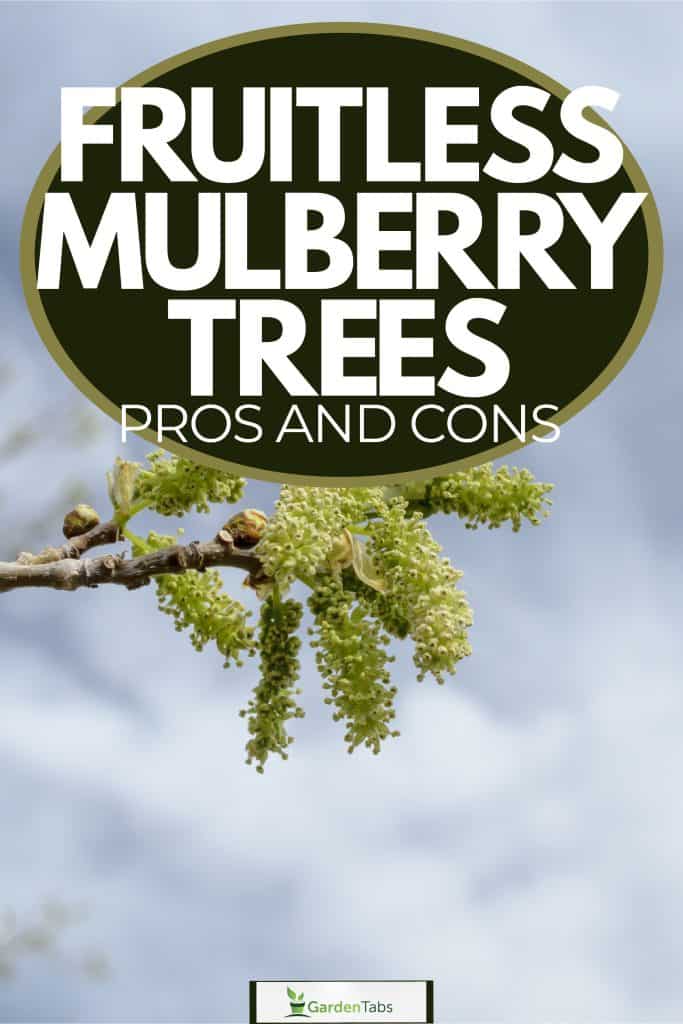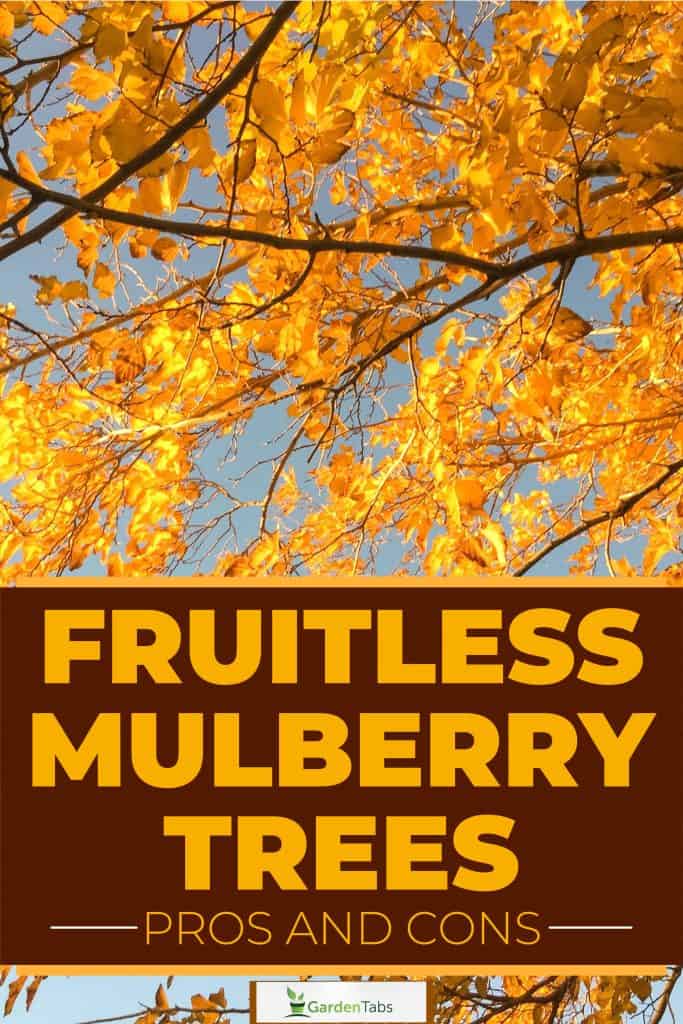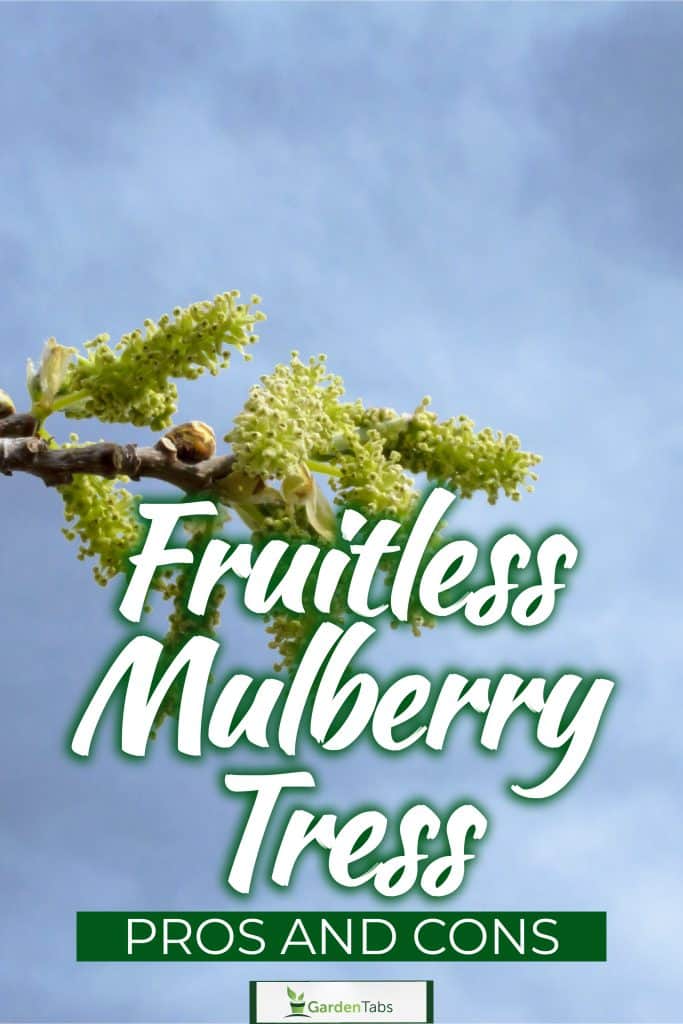You may be trying to decide whether to add fruitless mulberry trees to your yard. If you're wondering about the pros and cons of non-fruiting mulberry trees, keep reading. We have researched the topic and have answers for you.
Fruitless mulberry trees are best used as landscape trees since they provide a lot of shade as their branches spread. White mulberry trees are fast-growing and able to thrive even in hot weather. The downside of fruitless mulberry trees is their roots, which can be invasive.
There is much more to learn about fruitless mulberry trees. Continue reading to find out the details on their advantages, disadvantages, and other information you should know.

Advantages And Disadvantages Of Fruitless Mulberry Trees
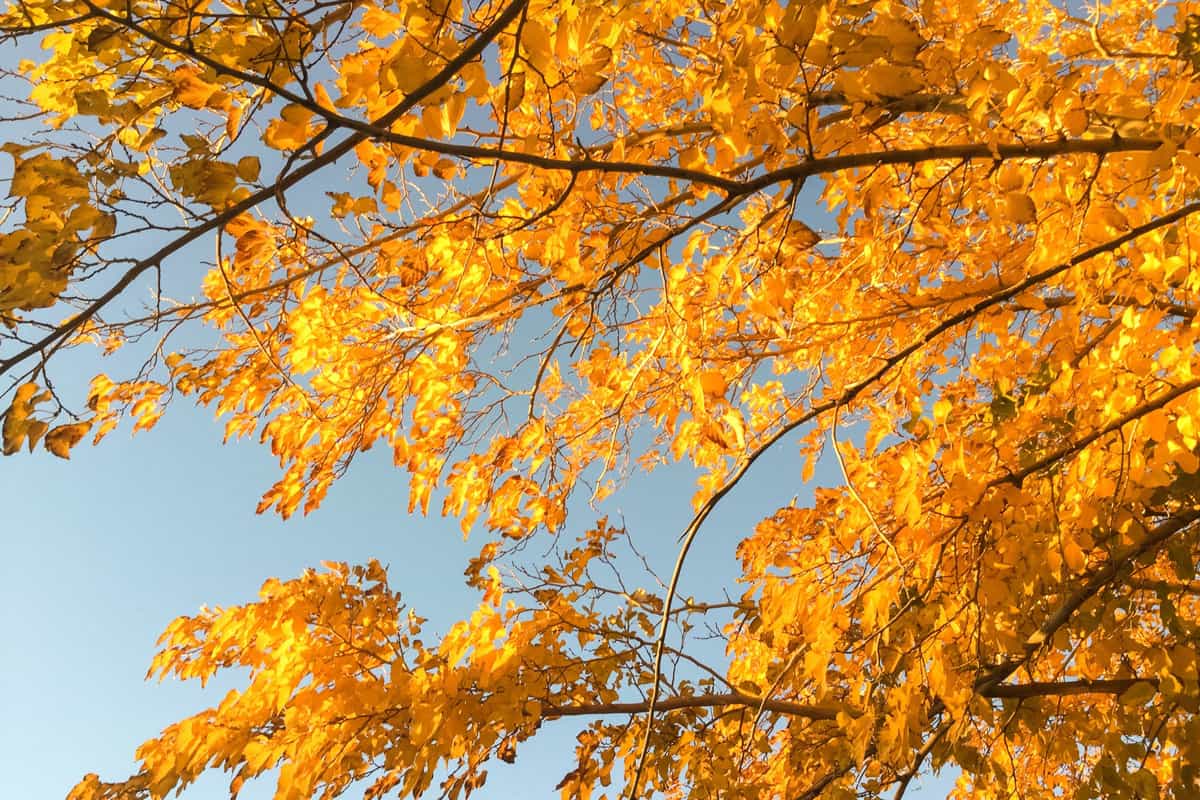
The mulberry tree has the scientific name Morus alba. It has been famous in China for its contribution to silk production for thousands of years. In North America, mulberry trees are popular as landscape trees for gardens. We'll cover the pros and cons of the tree here.
Advantages Of Fruitless Mulberry Trees
Provides Ample Shade
One of the many advantages of growing fruitless mulberry trees is the ample shade they provide, making them excellent landscape trees for gardens. Mulberry trees can grow to be 20-60 feet tall, and the branches spread widely, providing adequate shade.
Can Thrive In Hot Climate
The tree can grow in hot environments and temperate regions and can also thrive in coastal areas. It can withstand urban environments and adapt to different soils.
Easy To Grow
Fruitless mulberry trees are easy-to-grow trees. You can plant them just about anywhere. The trees love sunlight and are resistant to drought.
Fruitless mulberries require little maintenance. You will only need to fertilize them until they reach two years. You should apply two inches of compost to your trees during spring for the best results.
Click here to see these fertilizer spikes on Amazon.
No Messy Fruits
One factor that makes fruitless mulberry trees an excellent choice for a garden landscape is that they provide shade but do not produce fruits that stain the ground. They are not messy and won't attract birds who might scatter the seeds.
Use Of Mulberry Wood For Furniture
Fruitless mulberry wood can be a great source of material for furniture pieces. You can make furniture items like benches, chairs, tables, and cabinets from mulberry wood.
Great For Firewood Use
Fruitless mulberry trees can be a good source of firewood. When properly sun-dried, mulberry is great for firewood use.
Disadvantages Of Fruitless Mulberry Trees
Shallow Roots
Fruitless mulberries have roots that can easily spread and are not ideal for lawns. You need to provide adequate space when planting fruitless mulberries since their roots grow invasively, causing harm to your water pipes, pathways, and sewage system.
To prevent damage, you must also provide ample distance when planting near your house and select the best area to plant your trees to protect damage from invasive roots.
Need For Moisture
Although fruitless mulberry trees are moderately drought resistant, they thrive best with ample irrigation. Mulberries grow well in soil with a ph ranging from 5.5 to 6.5.
How To Care For Fruitless Mulberry Trees
Growing fruitless mulberries requires little care, as they are easy-to-grow trees. However, you can grow healthy mulberry trees by following these tips.
- Fruitless mulberry trees thrive well in full sun, so select a location where they will receive adequate sunlight. They can grow in partial shade but thrive best when under the sun.
- Choose loamy and well-draining soil for your trees. Fruitless mulberries aren't fussy with soil but will grow well with earthy ground.
- Stake branches of your young trees as they grow fast and can develop heavy crowns. Staking the stems will help prevent damage to your tree during strong winds.
- Do a regular inspection of the leaves of your trees. When you notice that the leaves are turning yellowish, it could mean that fungus and bacteria are spreading and contaminating your tree.
- Water your trees regularly. Mulberries may be drought resistant but grow well when sufficiently irrigated.
- Prune your young mulberry trees. When autumn comes, and shedding happens, prune your fruitless mulberries by removing dying and injured branches to make way for new growth and the development of new ones.
Click here to see this telescopic metal rake on Amazon.
- Protect your tree during winter, as extreme cold and frost can damage your trees. Cover the soil and surrounding area with a chunky layer of mulch.
Click here to see these pruning shears on Amazon.
When Is The Best Time To Plant A Fruitless Mulberry Tree?
The ideal time to plant your mulberry seed or sapling is in spring after the last frost. You can also plant your mulberry during fall when the weather becomes temperate.
If you live in an area with mild summers, you can also begin planting your fruitless mulberries during that time. When planting, you should make sure that large trees are spaced at least 30 feet apart.
What Is The Lifespan Of A Fruitless Mulberry Tree?
Trees last longer when given sufficient care. White mulberries can live up to 150 years as long as they are in the best location where they receive full sunlight and deep irrigation.
Pests That Attack The Fruitless Mulberry Tree
Several pests may attack and infect fruitless mulberry trees. Here are some of them.
Spider Mites
Spider mites are tiny pests that are white. These mites consume the foliage of fruitless mulberry trees and often repeatedly make webs on the leaves. You can manage spider mites by using your garden hose to solidly spray the tree.
Click here to see this garden hose on Amazon.
Whiteflies
Whiteflies are tiny pests that grow one to two millimeters in size and have a white covering.
Female whiteflies fix their eggs on the foliage of the fruitless mulberry tree, and the eggs stay there until they hatch into larvae. The larva consumes the leaves and discharges honeydew.
The yellowish color of the leaves and the honeydew indicate whitefly infestation. To get rid of whiteflies, spray insecticidal soap on the bottom of the leaves while whiteflies are in their pupae form.
Click here to see this insecticidal soap spray on Amazon.
Beetle Borers
Beetle borers or bark borers infest trees, including fruitless mulberry trees. Bark beetles are reddish and brownish and have cylinder shape body. These pests soften the twigs and branches of non-fruiting mulberry trees.
Benefits And Uses Of Mulberry Leaves In Traditional Medicine
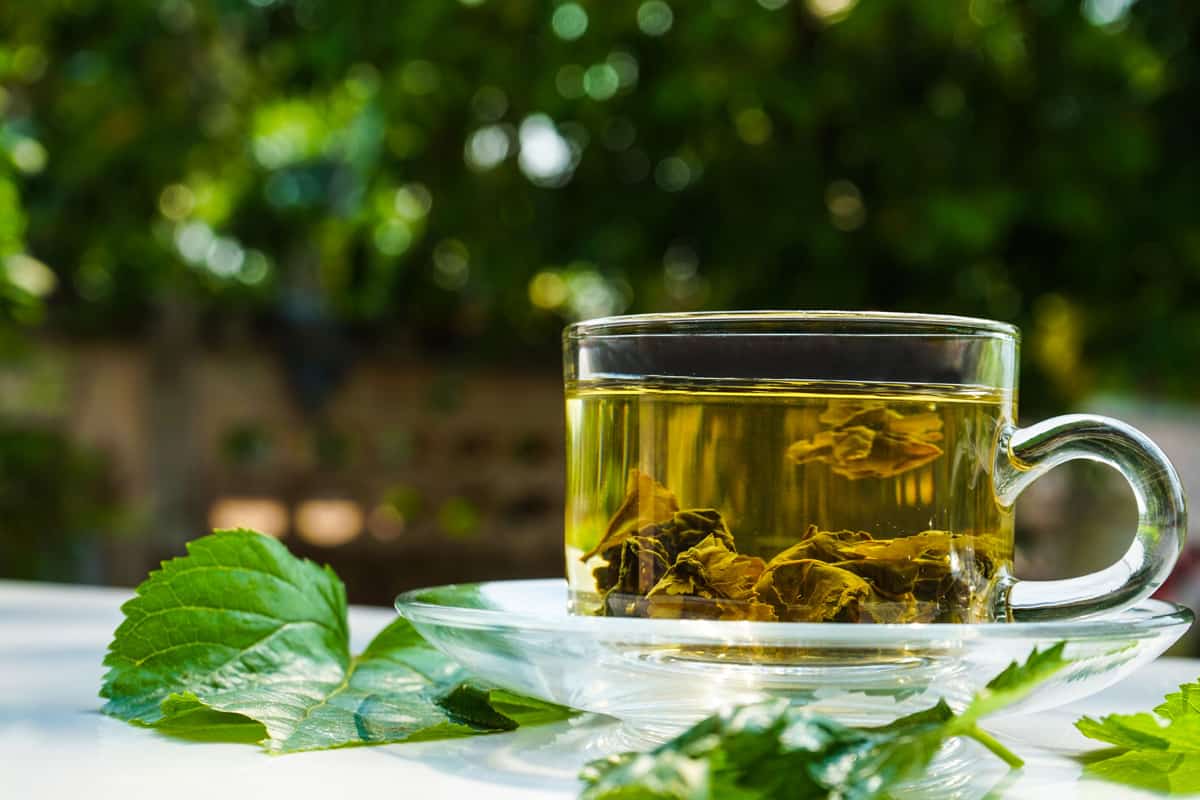
Fruitless mulberry trees are non-bearing trees, but their leaves are edible and are popular as an ingredient in traditional medicine. Mulberry leaves are natural antioxidants, highly nutritious, and offer vitamin benefits!
Commonly, they are excellent for making herbal teas, and you can cook the leaves and consume them afterward. Nowadays, mulberry leaf supplements are also available on the market. It's important to note that before taking any type of supplement, you should consult your doctor.
Click here to see this mulberry leaf herbal tea on Amazon.
Possible Health Advantages Of Mulberry Leaves
- May lower blood sugar and insulin level and helps prevent diabetes.
- May reduce cholesterol and regulate blood pressure.
- May help prevent heart disease.
- May help decrease inflammation due to its antioxidant properties.
- May help fight chronic illnesses, cancer, and related diseases.
- May support liver protection and aid in weight loss.
Click here to see this mulberry extract power supplement on Amazon.
Final Thoughts
The fruitless mulberry tree, like other trees, has pros and cons. Knowing the advantages and downsides of the tree can help you decide whether or not it is the right tree for you. Learning about its needs and care requirements gives you in-depth knowledge of how to grow a healthy tree.
Before you go, you may be interested in reading these other related articles.




